THE MOON HAS RISEN (1955)
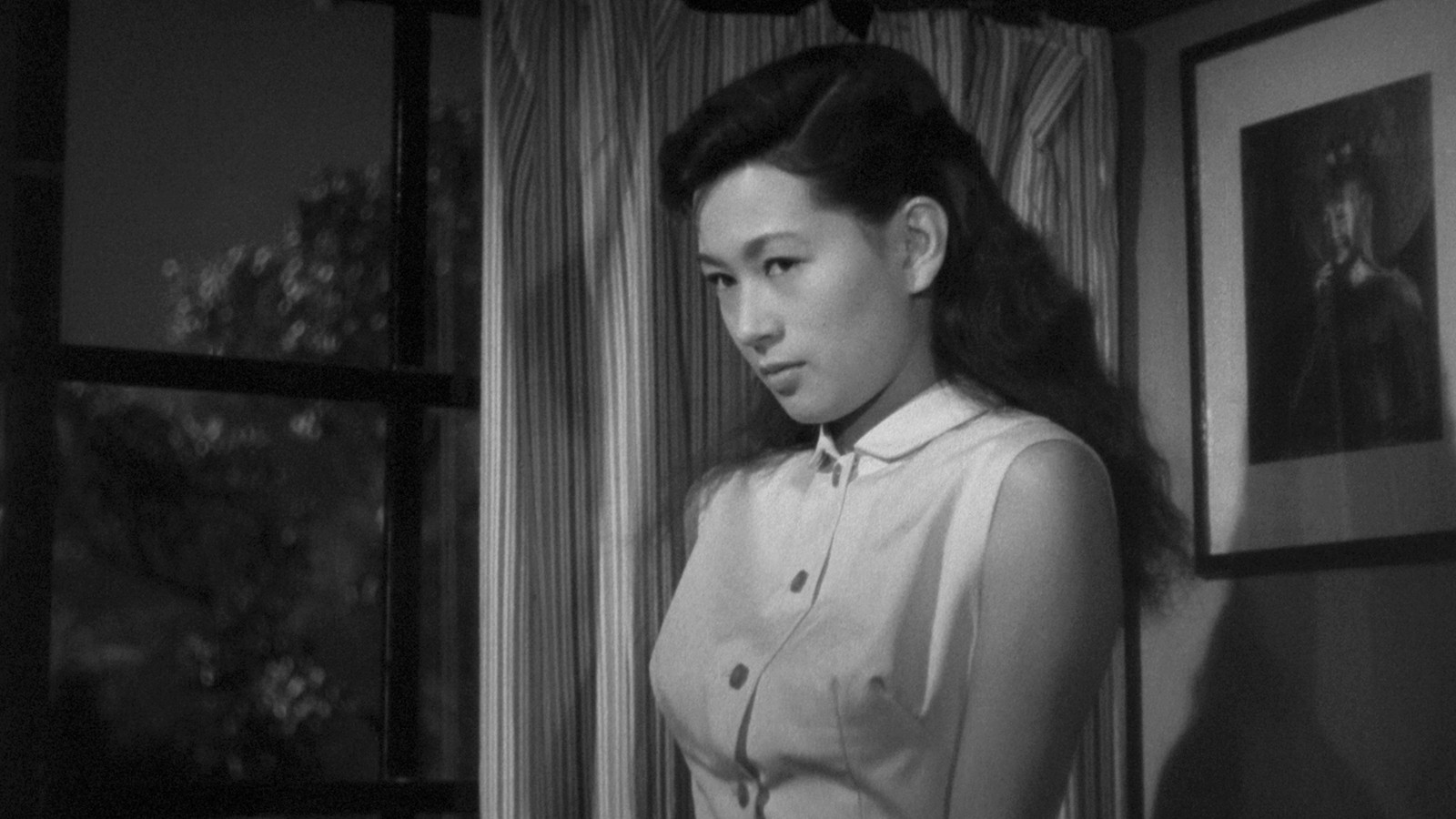

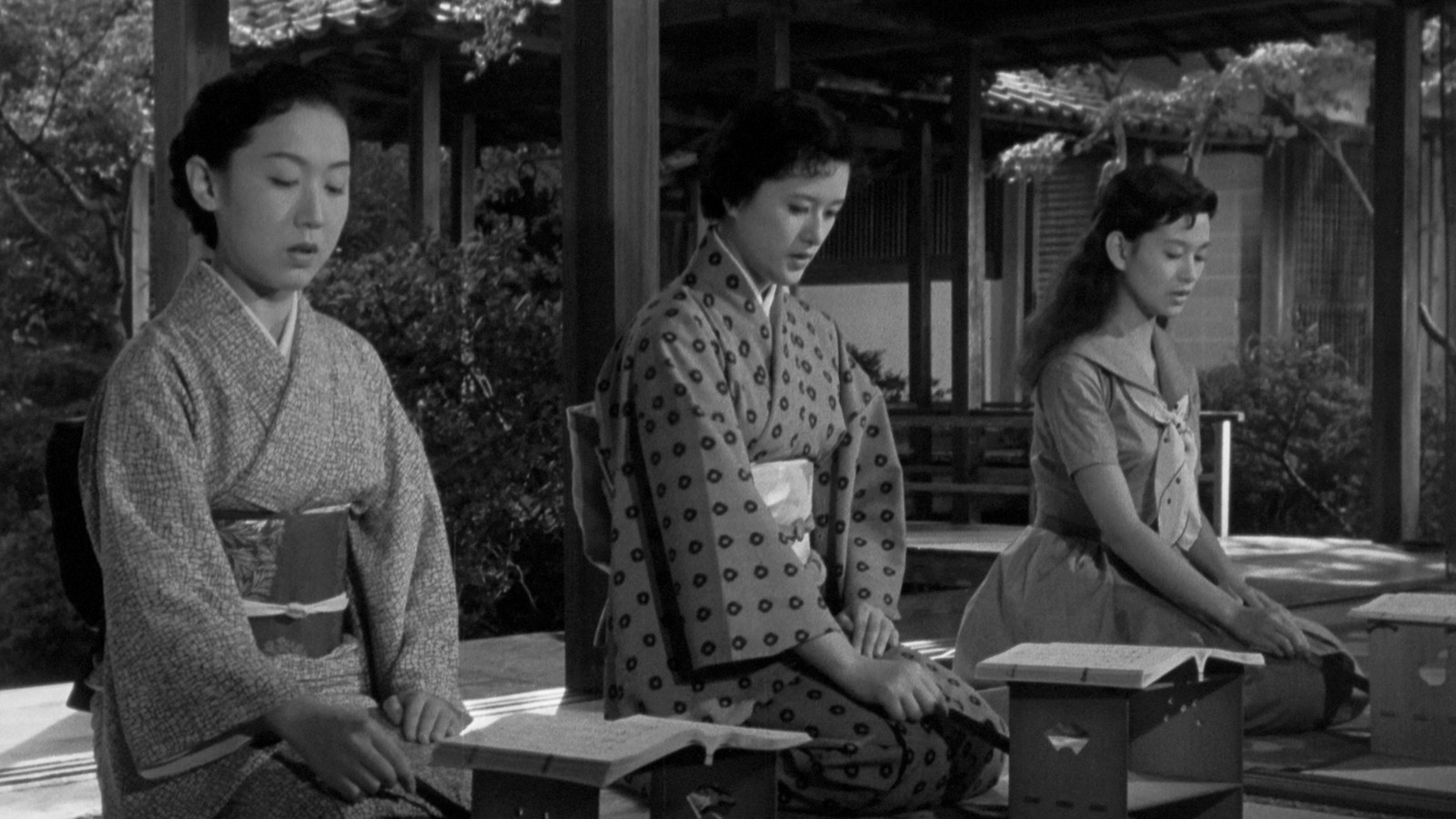
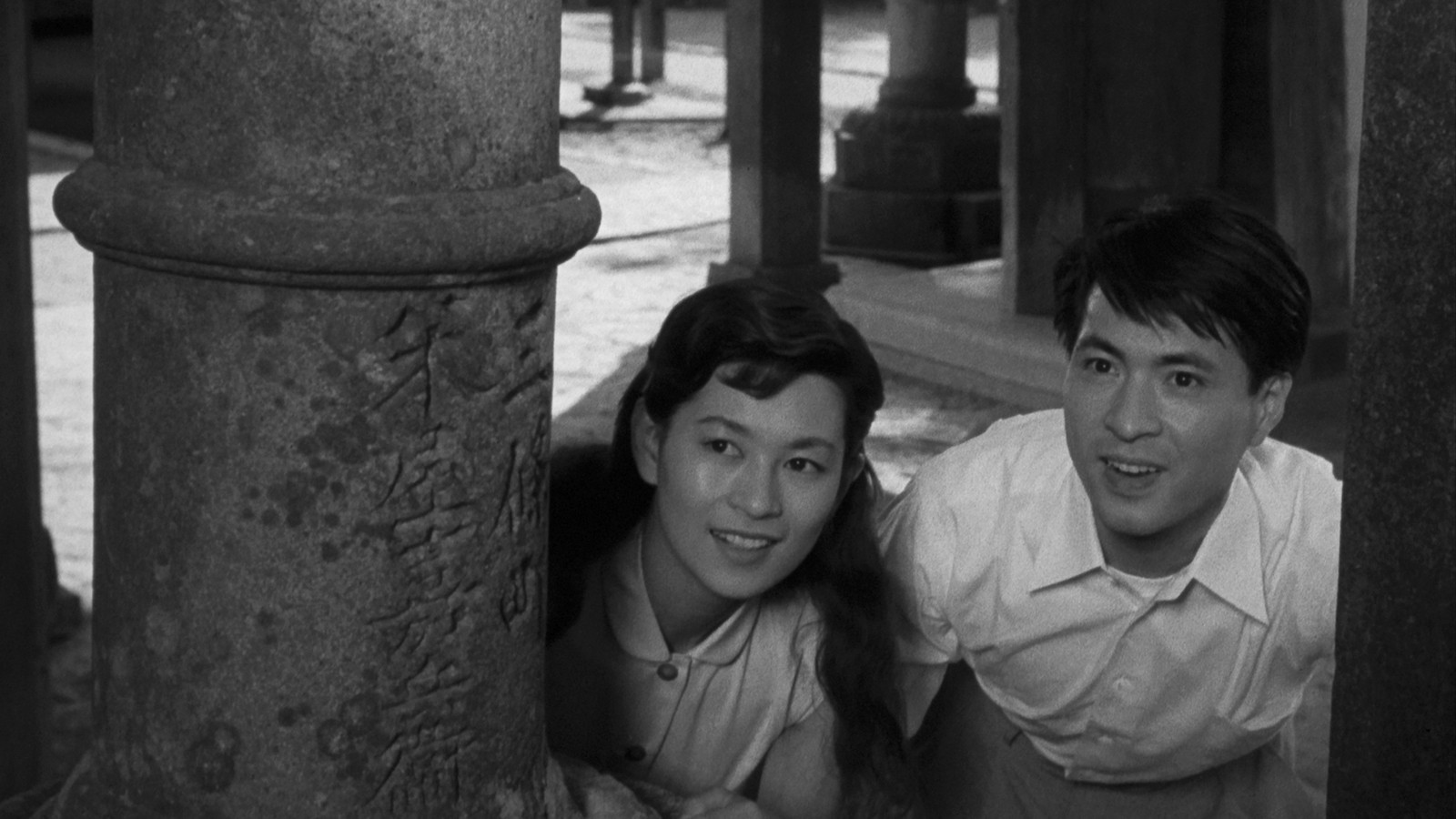
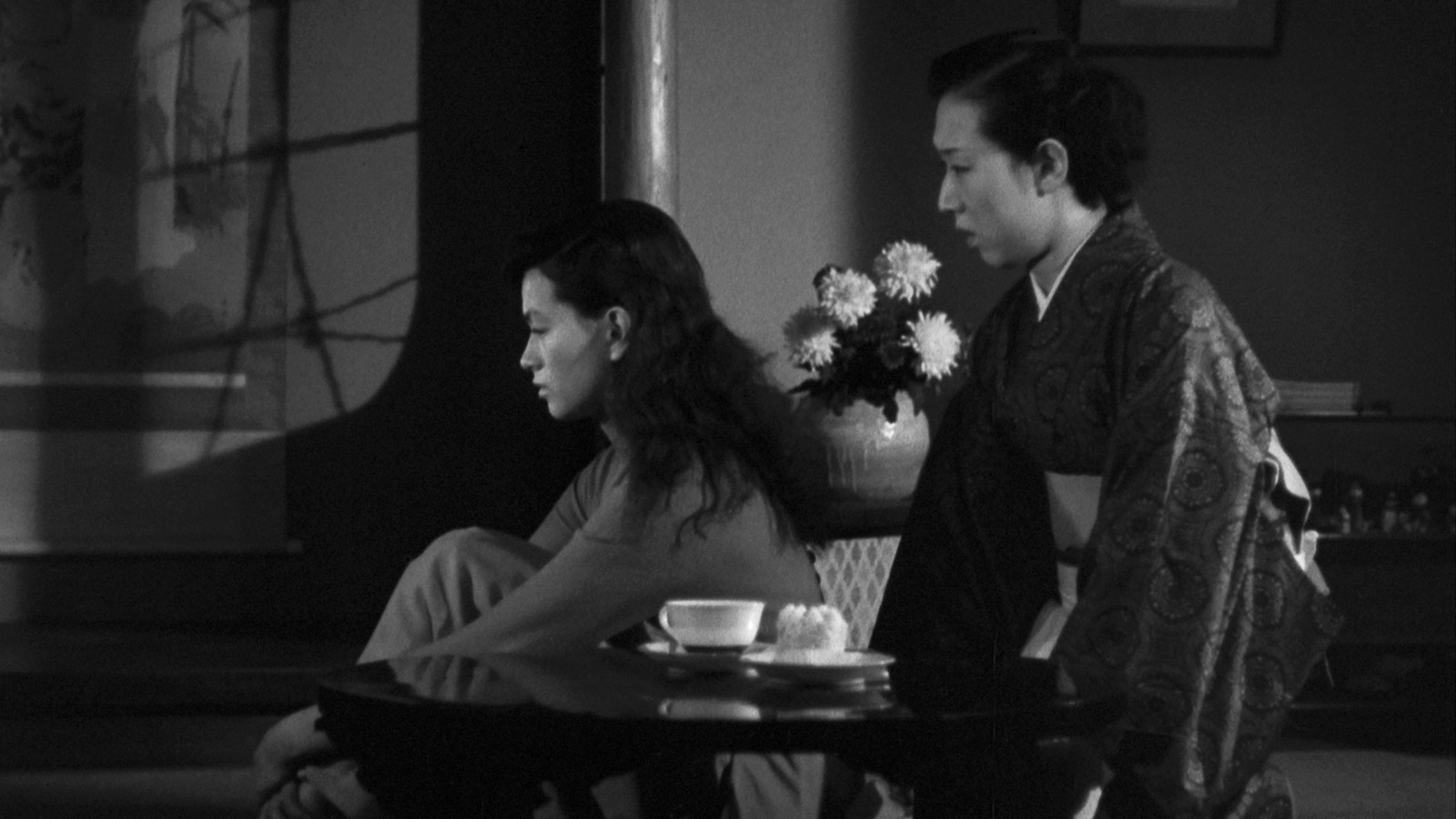
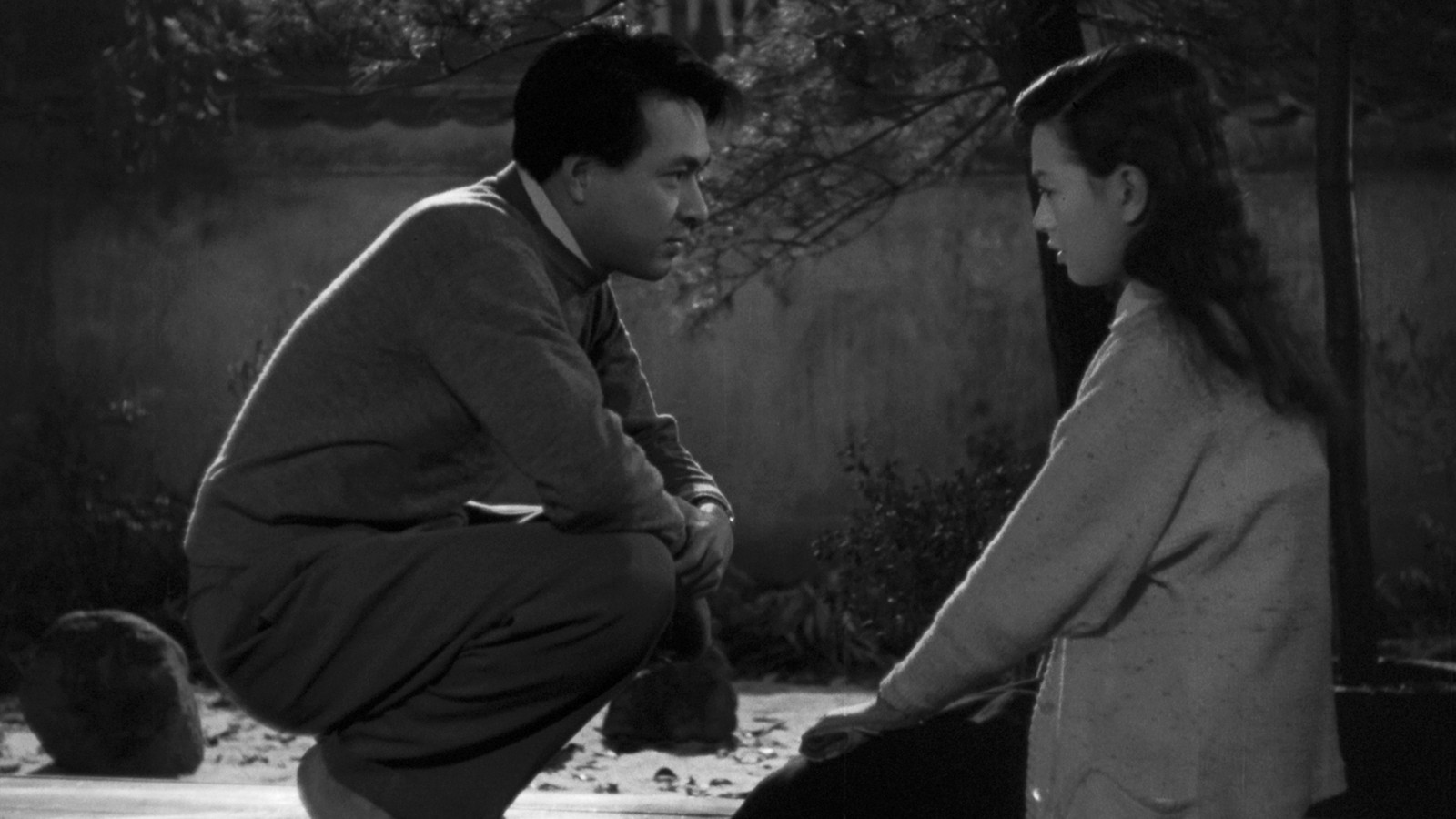
3:30PM,
Friday April 29
12:45PM, Sun May 01
Sunday screening Introduced by Kiki Fung
Randwick Ritz
Director: Kinuyo Tanaka
Country: Japan
Year: 1955
Runtime: 102 minutes
Rating: UC15+
Language: Japanese with English subtitles
TICKETS ⟶
12:45PM, Sun May 01
Sunday screening Introduced by Kiki Fung
Randwick Ritz
Director: Kinuyo Tanaka
Country: Japan
Year: 1955
Runtime: 102 minutes
Rating: UC15+
Language: Japanese with English subtitles
TICKETS ⟶
“GORGEOUS LOW-KEY TWIST ON THE TYPICAL OZU WILL-THEY-WON’T-THEY MARRY” – CARLOS VALLADARES
Veteran actor Kinuyo Tanaka was also one of Japan’s first female directors. In her second feature, co-written by Yasujirō Ozu, she casts the master’s favourite Chishū Ryū as a father living in a temple in Nara watching and advising his three daughters as they pursue and come to terms with their quests for love.
“Steering clear of Ozu’s trademark tatami mat view and preference for direct to camera speech, Tanaka’s lensing is shyer and avoids faces altogether to focus on the physical.” – Hayley Scanlon
Introduced by Kiki Fung, Critic, Curator, Programmer Hong Kong International Film Festival.
Watch the Trailer
Veteran actor Kinuyo Tanaka was also one of Japan’s first female directors. In her second feature, co-written by Yasujirō Ozu, she casts the master’s favourite Chishū Ryū as a father living in a temple in Nara watching and advising his three daughters as they pursue and come to terms with their quests for love.
“Steering clear of Ozu’s trademark tatami mat view and preference for direct to camera speech, Tanaka’s lensing is shyer and avoids faces altogether to focus on the physical.” – Hayley Scanlon
Introduced by Kiki Fung, Critic, Curator, Programmer Hong Kong International Film Festival.
Watch the Trailer
FILM NOTES
By Jane Mills
Tanaka
Kinoyu:
There was nothing but directing for me if I eventually wanted to
do something a little new as a woman”
–
Tanaka
Kinoyu.[i]
Tanaka “executes tonal shifts that astonish with bursts of intense feeling and stretches out tension (especially sexual tension) like pulled sugar, firm but still delicate.”[ii]
The director of six remarkable features, Tanaka Kinoyu has often been referred to as someone who always came second, never first: as the second Japanese female film director after Sakane Tazuko (1904–1975) but not the first Japanese woman to have a career with a significant body of features; as a highly successful actress in an acting career lasting over 50 years in more than 250 films but seldom as a successful director; as Mizuguchi Kenji’s muse but not the creator and keeper of her own life. If her directing career is mentioned at all, and it’s only fairly recently that this has been recognised and appreciated, she tends to be dismissed for working in mainstream rather than arthouse cinema or, as in the case of The Moon Has Risen (1955), discussed in terms of its debt to the great male director, Ozu Yasujirō. There is an undoubted tendency among English-speaking and Japanese film academics, critics and film-lovers to focus on Tanaka’s acting career and to belittle her directorial place in Japanese film history.
But as academics Irene González-López and Michael Smith argue persuasively, Tanaka “is genuinely remarkable in her own right.” She deserves recognition not only as a highly intelligent and talented filmmaker but also for being “the first woman in Japan to build a career as a commercial feature filmmaker, directing six films between 1953 and 1962, a time period in which very little filmmaking activity was carried out by women, not only in Japan, but across the world.”[iii]
Tanaka was born in 1909 in Shimonoseki, a city at the south-western tip of Japan’s largest island, far away from the nation’s film-making centre in Tokyo. In socio-political terms, this was a time when, while ostensibly aiming for legal and social modernity, Japan’s 1898 Civil Code had formally dispossessed women of most of their economic rights and personal freedoms. This dual and contradictory approach to gender and modernity, would prove a recurring theme throughout Tanaka’s life and films both in front and behind the camera.
Her mother came from a wealthy family with the traditional, conservative values of the upper social classes. Her father, however, was a modern, liberal man who espoused the new. Her father died when she was 18 months old and following some financial malpractice by a family retainer, the family slid into poverty. With little formal education after she was nine, Tanaka demonstrated talent on the biwa (a lute-like instrument) and by the age of twelve was a local star in a music troupe able to support her family. This she would do for the rest of her life.
Upon seeing her first film at around this age, Tanaka determined to become a film actress. With luck on her side (one of her brothers who worked as a clerk for the Shochiku studios pulled some strings), Tanaka entered the film industry in 1924. She rapidly became a star and shot to superstardom when cast in the leading role in Japan’s first technologically successful sound talkie, The Neighbour’s Wife and Mine/ Madamu to nyōbō (Gosho Heinosuke 1931).
Tanaka was a big film star. So big, that in the 1930s her name appeared in the titles of several films in which she starred. At this time, the Shochiku studios led the way in developing a narrative style which told women’s stories from a modern perspective. Tanaka was usually cast in roles of the conservative, chaste woman but the narratives often questioned traditional values and negotiated modernity. These films were directed by young “modernists” who would become the great masters of Japanese cinema, including Naruse Mikio, Gosho Heinosuke, Ozu Yasujirô, Shimazu Yasujirô, Shimizu Hiroshi and, above all, Mizoguchi Kenji who cast her in 15 of his films, most notably The Life of Oharu/Saikaku ichidai onna (1952), Ugetsu/Ugetsu monogatari(1953) and Sansho the Bailliff/Sanshō Dayū, (1954).
During the Asia-Pacific War (1941-1945) Tanaka acted in propaganda films: she had little option if she was to be employed at all. She gained notoriety, however, with her performance in Kinoshita Keisuke’s The Army/Rikugun (1944). This film greatly upset the censors largely because of Tanaka’s gut-wrenching performance as a mother whose distress is palpable when her son is sent to war. As Japanese cinephile Donald Richie notes, mothers were supposed to smile proudly as their sons were sent off to battle.[iv]
After the war and during the US occupation (1945-1952), what became known as the Golden Age of Japanese studio cinema began to emerge. Tanaka achieved even greater acclaim for her performances in films by leading directors who explored the main issues confronting women at this time: the impact of the urban shift on the family, war widows, the changing role of women as wives and daughters, access to education, the legality and morality of abortion, prostitution, divorce and adultery. But Tanaka had a wider vision: she demonstrated her independence by walking away from her contract with Shochiku to claim the right to choose where and for whom she worked and what films she would act in, and she decided she wanted to direct.
Becoming a director wasn’t easy for Tanaka - or for any woman, for that matter. Few women had made a career in commercial cinema as Tanaka would for ten years. After her first and only feature,New Clothing/Hatsu sugat (1936), Sakane (1904-1975) was not allowed to make more features and had mostly lived and worked in Manchukuo (the Japanese puppet state in Northeast China and Inner Mongolia) making educational non-fiction films. Elsewhere, Ida Lupino in the US (who directed 8 films including one for which she was uncredited before pursuing a highly successful television career) and Jacqueline Audry in France (who directed 16 features) were two exceptions.[v]In Japan, it was not until the 1990s that Tanaka’s output was surpassed by another woman director, Kawase Naomi; unlike Tanaka, however, Kawase worked predominantly in the independent sector rather than the mainstream.
Inevitably, there was malevolent, sexist gossip that Tanaka gained promotion to the rank of director only because of her close – it was implied intimate - relationship with Mizoguchi. In reality, Mizoguchi offered no help at all. Famously, he opposed Tanaka’s application to the Directors’ Guild of Japan and was rumoured to have said: “Kinoyu does not have enough brains to be a film director.” Creating a female muse can cause problems for a man when his muse starts to show independence of mind, spirit and possible competition. Tanaka commented only that she and Mizoguchi were "married in front of the camera, but not behind it." On this acrimonious note, the friendship and working relationship between them ended.
Happily for us and for the legacy she left the Japanese film industry and culture, Mizoguchi was overruled and Tanaka was employed by Nikkatsu, the reputedly “modern” studio that, after re-opening in 1954, was known to welcome rebels, outsiders, and assistants looking for a chance.
While she hadn’t demonstrated any great interest in feminist politics, the experience of femininity became the focus of Tanaka’s six features over the next ten years (1953-1962). Her films covered a range of genres – war, period, melodrama, romantic comedy – and she took bold decisions regarding narrative content. Two decades before the second wave of feminism gained traction in Japan, the issues she addressed included breast cancer and mastectomy (very much a taboo topic in Japan as elsewhere in the world in the 1950s), prostitution, lesbianism, interracial relationships - at times with an intensity unusual for Japanese cinema and well before most other filmmakers elsewhere in the world. A recurrent narrative theme of hers was the fate of women mistreated by family, lovers and society.
Throughout and after her ten years of directing, Tanaka continued to act, reaching the apex of international acclaim when she won Best Actress award at Berlin for her performance as an aged prostitute in Kumai Kei’s Sandakan N° 8 (1974). Tanaka died of a brain tumour two years later. Slowly she gained recognition, culminating in 2021 when all six of her films were screened theatrically in digitally remastered versions at the Cannes Film Festival and the Lyon Film Festival.
Tanaka “executes tonal shifts that astonish with bursts of intense feeling and stretches out tension (especially sexual tension) like pulled sugar, firm but still delicate.”[ii]
The director of six remarkable features, Tanaka Kinoyu has often been referred to as someone who always came second, never first: as the second Japanese female film director after Sakane Tazuko (1904–1975) but not the first Japanese woman to have a career with a significant body of features; as a highly successful actress in an acting career lasting over 50 years in more than 250 films but seldom as a successful director; as Mizuguchi Kenji’s muse but not the creator and keeper of her own life. If her directing career is mentioned at all, and it’s only fairly recently that this has been recognised and appreciated, she tends to be dismissed for working in mainstream rather than arthouse cinema or, as in the case of The Moon Has Risen (1955), discussed in terms of its debt to the great male director, Ozu Yasujirō. There is an undoubted tendency among English-speaking and Japanese film academics, critics and film-lovers to focus on Tanaka’s acting career and to belittle her directorial place in Japanese film history.
But as academics Irene González-López and Michael Smith argue persuasively, Tanaka “is genuinely remarkable in her own right.” She deserves recognition not only as a highly intelligent and talented filmmaker but also for being “the first woman in Japan to build a career as a commercial feature filmmaker, directing six films between 1953 and 1962, a time period in which very little filmmaking activity was carried out by women, not only in Japan, but across the world.”[iii]
Tanaka was born in 1909 in Shimonoseki, a city at the south-western tip of Japan’s largest island, far away from the nation’s film-making centre in Tokyo. In socio-political terms, this was a time when, while ostensibly aiming for legal and social modernity, Japan’s 1898 Civil Code had formally dispossessed women of most of their economic rights and personal freedoms. This dual and contradictory approach to gender and modernity, would prove a recurring theme throughout Tanaka’s life and films both in front and behind the camera.
Her mother came from a wealthy family with the traditional, conservative values of the upper social classes. Her father, however, was a modern, liberal man who espoused the new. Her father died when she was 18 months old and following some financial malpractice by a family retainer, the family slid into poverty. With little formal education after she was nine, Tanaka demonstrated talent on the biwa (a lute-like instrument) and by the age of twelve was a local star in a music troupe able to support her family. This she would do for the rest of her life.
Upon seeing her first film at around this age, Tanaka determined to become a film actress. With luck on her side (one of her brothers who worked as a clerk for the Shochiku studios pulled some strings), Tanaka entered the film industry in 1924. She rapidly became a star and shot to superstardom when cast in the leading role in Japan’s first technologically successful sound talkie, The Neighbour’s Wife and Mine/ Madamu to nyōbō (Gosho Heinosuke 1931).
Tanaka was a big film star. So big, that in the 1930s her name appeared in the titles of several films in which she starred. At this time, the Shochiku studios led the way in developing a narrative style which told women’s stories from a modern perspective. Tanaka was usually cast in roles of the conservative, chaste woman but the narratives often questioned traditional values and negotiated modernity. These films were directed by young “modernists” who would become the great masters of Japanese cinema, including Naruse Mikio, Gosho Heinosuke, Ozu Yasujirô, Shimazu Yasujirô, Shimizu Hiroshi and, above all, Mizoguchi Kenji who cast her in 15 of his films, most notably The Life of Oharu/Saikaku ichidai onna (1952), Ugetsu/Ugetsu monogatari(1953) and Sansho the Bailliff/Sanshō Dayū, (1954).
During the Asia-Pacific War (1941-1945) Tanaka acted in propaganda films: she had little option if she was to be employed at all. She gained notoriety, however, with her performance in Kinoshita Keisuke’s The Army/Rikugun (1944). This film greatly upset the censors largely because of Tanaka’s gut-wrenching performance as a mother whose distress is palpable when her son is sent to war. As Japanese cinephile Donald Richie notes, mothers were supposed to smile proudly as their sons were sent off to battle.[iv]
After the war and during the US occupation (1945-1952), what became known as the Golden Age of Japanese studio cinema began to emerge. Tanaka achieved even greater acclaim for her performances in films by leading directors who explored the main issues confronting women at this time: the impact of the urban shift on the family, war widows, the changing role of women as wives and daughters, access to education, the legality and morality of abortion, prostitution, divorce and adultery. But Tanaka had a wider vision: she demonstrated her independence by walking away from her contract with Shochiku to claim the right to choose where and for whom she worked and what films she would act in, and she decided she wanted to direct.
Becoming a director wasn’t easy for Tanaka - or for any woman, for that matter. Few women had made a career in commercial cinema as Tanaka would for ten years. After her first and only feature,New Clothing/Hatsu sugat (1936), Sakane (1904-1975) was not allowed to make more features and had mostly lived and worked in Manchukuo (the Japanese puppet state in Northeast China and Inner Mongolia) making educational non-fiction films. Elsewhere, Ida Lupino in the US (who directed 8 films including one for which she was uncredited before pursuing a highly successful television career) and Jacqueline Audry in France (who directed 16 features) were two exceptions.[v]In Japan, it was not until the 1990s that Tanaka’s output was surpassed by another woman director, Kawase Naomi; unlike Tanaka, however, Kawase worked predominantly in the independent sector rather than the mainstream.
Inevitably, there was malevolent, sexist gossip that Tanaka gained promotion to the rank of director only because of her close – it was implied intimate - relationship with Mizoguchi. In reality, Mizoguchi offered no help at all. Famously, he opposed Tanaka’s application to the Directors’ Guild of Japan and was rumoured to have said: “Kinoyu does not have enough brains to be a film director.” Creating a female muse can cause problems for a man when his muse starts to show independence of mind, spirit and possible competition. Tanaka commented only that she and Mizoguchi were "married in front of the camera, but not behind it." On this acrimonious note, the friendship and working relationship between them ended.
Happily for us and for the legacy she left the Japanese film industry and culture, Mizoguchi was overruled and Tanaka was employed by Nikkatsu, the reputedly “modern” studio that, after re-opening in 1954, was known to welcome rebels, outsiders, and assistants looking for a chance.
While she hadn’t demonstrated any great interest in feminist politics, the experience of femininity became the focus of Tanaka’s six features over the next ten years (1953-1962). Her films covered a range of genres – war, period, melodrama, romantic comedy – and she took bold decisions regarding narrative content. Two decades before the second wave of feminism gained traction in Japan, the issues she addressed included breast cancer and mastectomy (very much a taboo topic in Japan as elsewhere in the world in the 1950s), prostitution, lesbianism, interracial relationships - at times with an intensity unusual for Japanese cinema and well before most other filmmakers elsewhere in the world. A recurrent narrative theme of hers was the fate of women mistreated by family, lovers and society.
Throughout and after her ten years of directing, Tanaka continued to act, reaching the apex of international acclaim when she won Best Actress award at Berlin for her performance as an aged prostitute in Kumai Kei’s Sandakan N° 8 (1974). Tanaka died of a brain tumour two years later. Slowly she gained recognition, culminating in 2021 when all six of her films were screened theatrically in digitally remastered versions at the Cannes Film Festival and the Lyon Film Festival.
The Film:
In The Moon Has Risen, her second feature as director, Tanaka renewed her
relationship with Ozu who co-scripted it with Saitō Ryōsuke. All three had
previously worked together on A Hen in the Wind/Kaze no naka no mendori (1948).
Ozu had originally intended to direct it himself but after numerous delays and
a complicated political wrangle with the main commercial studios, he gifted the
script to Tanaka to be produced by the smaller and more adventurous Nikkatsu
studio.
The film is a genre hybrid: a ‘home drama’ fused with romance, comedy and some elements of the coming-of-age genre (although the young person who comes of age is the 21-year old Setsuko, Mie Kitahara plays her as an emotionally labile adolescent). It tells the story of a middle class family who after the war moved from Tokyo to live in a converted temple in the quiet city of Nara. The family comprises the gently teasing widower patriarch, Mokichi (Ozu favourite, Ryû Chishû), and his three daughters: the recently widowed Chizuru (Hisako Yamane), the shy middle daughter, Ayoko (Yôko Sugi); and Setsuko, the ebullient, strong-willed, often infuriating, chatterbox, youngest sister played by the effervescent Mie Kitahara.
While contemptuous of the traditional role of the formal matchmaker, Setsuko determines to matchmake between her middle sister, Ayoko, and the handsome Amamiya (Mishima Kô) who are both too shy to declare their love for each other. In a comedy that every so often verges on – even tips into - the screwball, Setsuke gets the family servant (in a lovely performance by Takane) to engineer a moonlit meeting between the two would-be lovers. Though a series of emotional machinations involving deceptions on all sides, moonlit trysts and secret coded telegrams, Setsuke argues furiously with Shôji (Yasui Shôji), her matchmaking accomplice, only to realise that she is in love with him. By the end, Ayoko says she’s going to Tokyo to tell an aunt that she has no intention of accepting the suitor proposed by the traditional matchmaker and goes to Amamiya’s waiting arms, Setsuke and Shôji reconcile and go to Tokyo together, and the eldest sister sheds a quiet tear when she realises that her father understands she would like to marry again (“this time, one who lives”). And all’s well that ends well.
Because of Ozu’s involvement, the film - then and now - is often referred to as his film. Tanaka was not afraid to invoke his name; she, after all, was a newbie director and he was a recognised Master of film art. A star of Tanaka’s calibre and experience knew the value of publicity. It’s certainly not overtly feminist and, of all Tanaka’s films, its treatment of the changing attitudes towards and acceptable behaviour of women is perhaps the most subtle. Nevertheless, there are many notes that would come to be associated with Tanaka’s authorial presence. As film buff Jake Savage writes:
Ozu’s fingerprints are all over the narrative and indeed, some of the stylistic choices but Tanaka brings an energy to the film that is unmatched…. She has undone some of the threads woven by Ozu in a film like Late Spring, the father here is in the background, and our focus becomes squarely on the daughters. As Ryû fades into the background, Kitahara and Sugi (the youngest and middle sisters) emerge to the front. Their sibling conflict seems flimsy and light, but Tanaka grants it a value and respect… Ozu made the quotidian dramas between generations both palpable and poignant, Tanaka has done the same for a drama within one generation. [vi]
Yes, we see several of Ozu’s famed static shots, composed frames and camera levels, but Tanaka takes her film (and it is very much hers) beyond homage to the master. After the early slow staccato and often static shots filmed in the style of Ozu’s celebrated ‘pillow shots’, the pace quickens and Tanaka gives us frontal compositions containing large expanses between foreground and background that are not at all Ozu in style. Richie points to Tanaka’s “careful delineation of character usually associated with her films” as well as her equally careful exploration of the tension that emerges at the junction of tradition and modernity.
At one point a character asks if the coded telegram messages that reference an eighth century poetry anthology is traditional or modern. “Both” is the unhesitating – and very modern - response. Another tone that Tanaka makes her own is how she foregrounds the women, thereby upstaging and pushing Ryû towards the back of the frame. For those who know his omniscient presence in Ozu’s oeuvre, this feels disconcertingly un-Ozu (although not always in the lead, he appeared in 52 of Ozu's 54 films). Above all, although the women are eager to follow and even be subservient to the men they love, these men are their choice and it is their desire, their sexual desire, no less, that drives the narrative.
There is a lovely joke that is obviously devised by Tanaka, a joke that assumes and teases the audience’s knowledge of Tanaka’s star persona. In a cameo role as a servant, she is ordered by the imperious Setsuko to impersonate her middle sister on the phone. As if at an audition, Setsuko sits in front of the nervous servant and leads her through her lines. After a few fluffs, all goes well. “You’re a natural,” Setsuke says. As Kelley Dong writes: “The encounter itself, between a legendary actress and Nikkatsu Studio’s up-and-coming it girl [Kitahara], playfully extends Tanaka’s examination of generational differences among women to the realm of cinema.”[vii]
While offering a tribute to Ozu, this is very much a Tanaka Kinuyo film. As in her other films, she employs a conventional melodrama narrative in order to subvert it. It is, perhaps, no accident, however, that her next three films were all written by women and that her final film, although with a male writer, had women producers. On a first viewing, The Moon has Risen may seem a light, frothy affair lacking in feminist politics. But looking more deeply into the frame and beyond the tributes to Ozu, one finds a film that defies the history of critical belittlement that has unfairly attended Tanaka’s reputation as a filmmaker.
[i]Cited in Irene González-López and Michael Smith, eds., Tanaka Kinuyo: Nation, Stardom, and Female Subjectivity, Edinburgh University Press, 2018.
[ii]Kelley Dong, ‘The Right to Refuse: The Films of Kinuyo Tanaka’, 19 Mar 2022 https://mubi.com/notebook/posts/the-right-to-refuse-the-films-of-kinuyo-tanaka
[iii] Irene González-López and Michael Smith, eds., Tanaka Kinuyo: Nation, Stardom, and Female Subjectivity, Edinburgh University Press, 2018.
[iv]Donald Richie, The Japanese Movie (Revised Edition), Kodansha, 1982.
[v]Ida Lupino directed eight films including one for which she was uncredited before pursuing a highly successful television career; Jacqueline Audry directed sixteen features.
[vi] https://cinematalk.wordpress.com/2015/12/28/tsuki-wa-noborinu-the-moon-has-risen-1955/
[vii] Kelley Dong
The film is a genre hybrid: a ‘home drama’ fused with romance, comedy and some elements of the coming-of-age genre (although the young person who comes of age is the 21-year old Setsuko, Mie Kitahara plays her as an emotionally labile adolescent). It tells the story of a middle class family who after the war moved from Tokyo to live in a converted temple in the quiet city of Nara. The family comprises the gently teasing widower patriarch, Mokichi (Ozu favourite, Ryû Chishû), and his three daughters: the recently widowed Chizuru (Hisako Yamane), the shy middle daughter, Ayoko (Yôko Sugi); and Setsuko, the ebullient, strong-willed, often infuriating, chatterbox, youngest sister played by the effervescent Mie Kitahara.
While contemptuous of the traditional role of the formal matchmaker, Setsuko determines to matchmake between her middle sister, Ayoko, and the handsome Amamiya (Mishima Kô) who are both too shy to declare their love for each other. In a comedy that every so often verges on – even tips into - the screwball, Setsuke gets the family servant (in a lovely performance by Takane) to engineer a moonlit meeting between the two would-be lovers. Though a series of emotional machinations involving deceptions on all sides, moonlit trysts and secret coded telegrams, Setsuke argues furiously with Shôji (Yasui Shôji), her matchmaking accomplice, only to realise that she is in love with him. By the end, Ayoko says she’s going to Tokyo to tell an aunt that she has no intention of accepting the suitor proposed by the traditional matchmaker and goes to Amamiya’s waiting arms, Setsuke and Shôji reconcile and go to Tokyo together, and the eldest sister sheds a quiet tear when she realises that her father understands she would like to marry again (“this time, one who lives”). And all’s well that ends well.
Because of Ozu’s involvement, the film - then and now - is often referred to as his film. Tanaka was not afraid to invoke his name; she, after all, was a newbie director and he was a recognised Master of film art. A star of Tanaka’s calibre and experience knew the value of publicity. It’s certainly not overtly feminist and, of all Tanaka’s films, its treatment of the changing attitudes towards and acceptable behaviour of women is perhaps the most subtle. Nevertheless, there are many notes that would come to be associated with Tanaka’s authorial presence. As film buff Jake Savage writes:
Ozu’s fingerprints are all over the narrative and indeed, some of the stylistic choices but Tanaka brings an energy to the film that is unmatched…. She has undone some of the threads woven by Ozu in a film like Late Spring, the father here is in the background, and our focus becomes squarely on the daughters. As Ryû fades into the background, Kitahara and Sugi (the youngest and middle sisters) emerge to the front. Their sibling conflict seems flimsy and light, but Tanaka grants it a value and respect… Ozu made the quotidian dramas between generations both palpable and poignant, Tanaka has done the same for a drama within one generation. [vi]
Yes, we see several of Ozu’s famed static shots, composed frames and camera levels, but Tanaka takes her film (and it is very much hers) beyond homage to the master. After the early slow staccato and often static shots filmed in the style of Ozu’s celebrated ‘pillow shots’, the pace quickens and Tanaka gives us frontal compositions containing large expanses between foreground and background that are not at all Ozu in style. Richie points to Tanaka’s “careful delineation of character usually associated with her films” as well as her equally careful exploration of the tension that emerges at the junction of tradition and modernity.
At one point a character asks if the coded telegram messages that reference an eighth century poetry anthology is traditional or modern. “Both” is the unhesitating – and very modern - response. Another tone that Tanaka makes her own is how she foregrounds the women, thereby upstaging and pushing Ryû towards the back of the frame. For those who know his omniscient presence in Ozu’s oeuvre, this feels disconcertingly un-Ozu (although not always in the lead, he appeared in 52 of Ozu's 54 films). Above all, although the women are eager to follow and even be subservient to the men they love, these men are their choice and it is their desire, their sexual desire, no less, that drives the narrative.
There is a lovely joke that is obviously devised by Tanaka, a joke that assumes and teases the audience’s knowledge of Tanaka’s star persona. In a cameo role as a servant, she is ordered by the imperious Setsuko to impersonate her middle sister on the phone. As if at an audition, Setsuko sits in front of the nervous servant and leads her through her lines. After a few fluffs, all goes well. “You’re a natural,” Setsuke says. As Kelley Dong writes: “The encounter itself, between a legendary actress and Nikkatsu Studio’s up-and-coming it girl [Kitahara], playfully extends Tanaka’s examination of generational differences among women to the realm of cinema.”[vii]
While offering a tribute to Ozu, this is very much a Tanaka Kinuyo film. As in her other films, she employs a conventional melodrama narrative in order to subvert it. It is, perhaps, no accident, however, that her next three films were all written by women and that her final film, although with a male writer, had women producers. On a first viewing, The Moon has Risen may seem a light, frothy affair lacking in feminist politics. But looking more deeply into the frame and beyond the tributes to Ozu, one finds a film that defies the history of critical belittlement that has unfairly attended Tanaka’s reputation as a filmmaker.
[i]Cited in Irene González-López and Michael Smith, eds., Tanaka Kinuyo: Nation, Stardom, and Female Subjectivity, Edinburgh University Press, 2018.
[ii]Kelley Dong, ‘The Right to Refuse: The Films of Kinuyo Tanaka’, 19 Mar 2022 https://mubi.com/notebook/posts/the-right-to-refuse-the-films-of-kinuyo-tanaka
[iii] Irene González-López and Michael Smith, eds., Tanaka Kinuyo: Nation, Stardom, and Female Subjectivity, Edinburgh University Press, 2018.
[iv]Donald Richie, The Japanese Movie (Revised Edition), Kodansha, 1982.
[v]Ida Lupino directed eight films including one for which she was uncredited before pursuing a highly successful television career; Jacqueline Audry directed sixteen features.
[vi] https://cinematalk.wordpress.com/2015/12/28/tsuki-wa-noborinu-the-moon-has-risen-1955/
[vii] Kelley Dong
The Restoration:
Digitally restored in 4k in 2021, based on a 35mm master positive preserved by Nikkatsu Corporation. Restored by Nikkatsu Corporation, with the support of the Japan Foundation. Digital restoration services provided by Imagica Entertainment Media Services, Inc.
Credits:
Tsuki wa noborinu, 月は上りぬ | Dir: TANAKA Kinuyo | Japan | 1955 | 102 mins | 4K DCP | B&W | 1.37:1 | Mono Sound | Japanese with English subtitles | U/C15+.
Production Company: Nikkatsu | Producer: KOI Hideo | Script: OZU Yasujirō, SAITŌ Ryōsuke | Photography: MINE Shigeyoshi | Editor: KONDŌ Mitsuo | Art Direction: KIMURA Takeo | Music: SAITŌ Takanobu.
Cast: RYŪ Chishū (‘Asai Maokichi’), SANO Shūji (‘Takasu Shunsuke’), YAMANE Hisako (‘Chizuru, First Daughter’), SUGI Yōko (‘Ayako, Second Daughter’), KITAHARA Mie (‘Setsuko, Third Daughter’), TANAKA Kinuyo (‘Yoneya’).
Source: Janus Films.
Credits:
Tsuki wa noborinu, 月は上りぬ | Dir: TANAKA Kinuyo | Japan | 1955 | 102 mins | 4K DCP | B&W | 1.37:1 | Mono Sound | Japanese with English subtitles | U/C15+.
Production Company: Nikkatsu | Producer: KOI Hideo | Script: OZU Yasujirō, SAITŌ Ryōsuke | Photography: MINE Shigeyoshi | Editor: KONDŌ Mitsuo | Art Direction: KIMURA Takeo | Music: SAITŌ Takanobu.
Cast: RYŪ Chishū (‘Asai Maokichi’), SANO Shūji (‘Takasu Shunsuke’), YAMANE Hisako (‘Chizuru, First Daughter’), SUGI Yōko (‘Ayako, Second Daughter’), KITAHARA Mie (‘Setsuko, Third Daughter’), TANAKA Kinuyo (‘Yoneya’).
Source: Janus Films.
